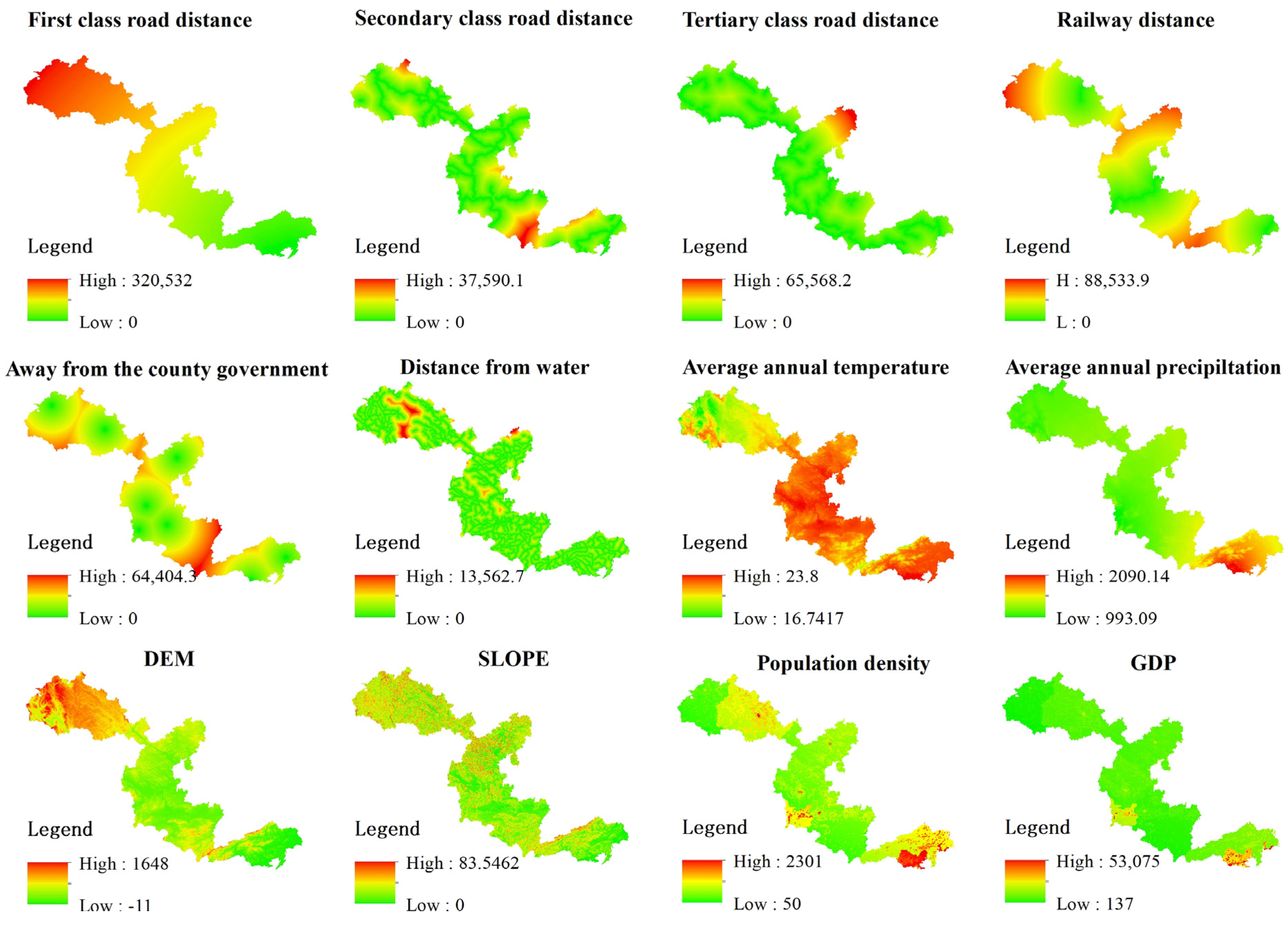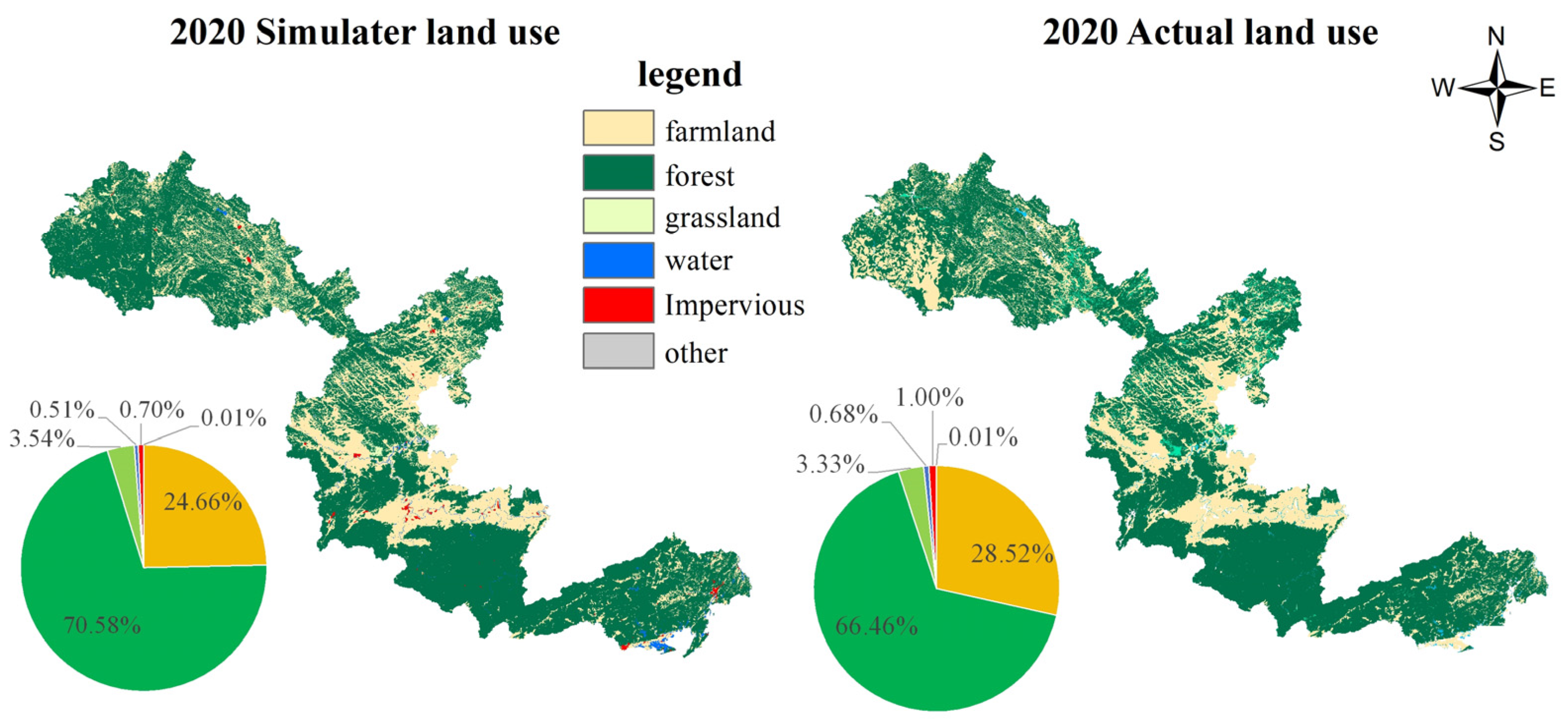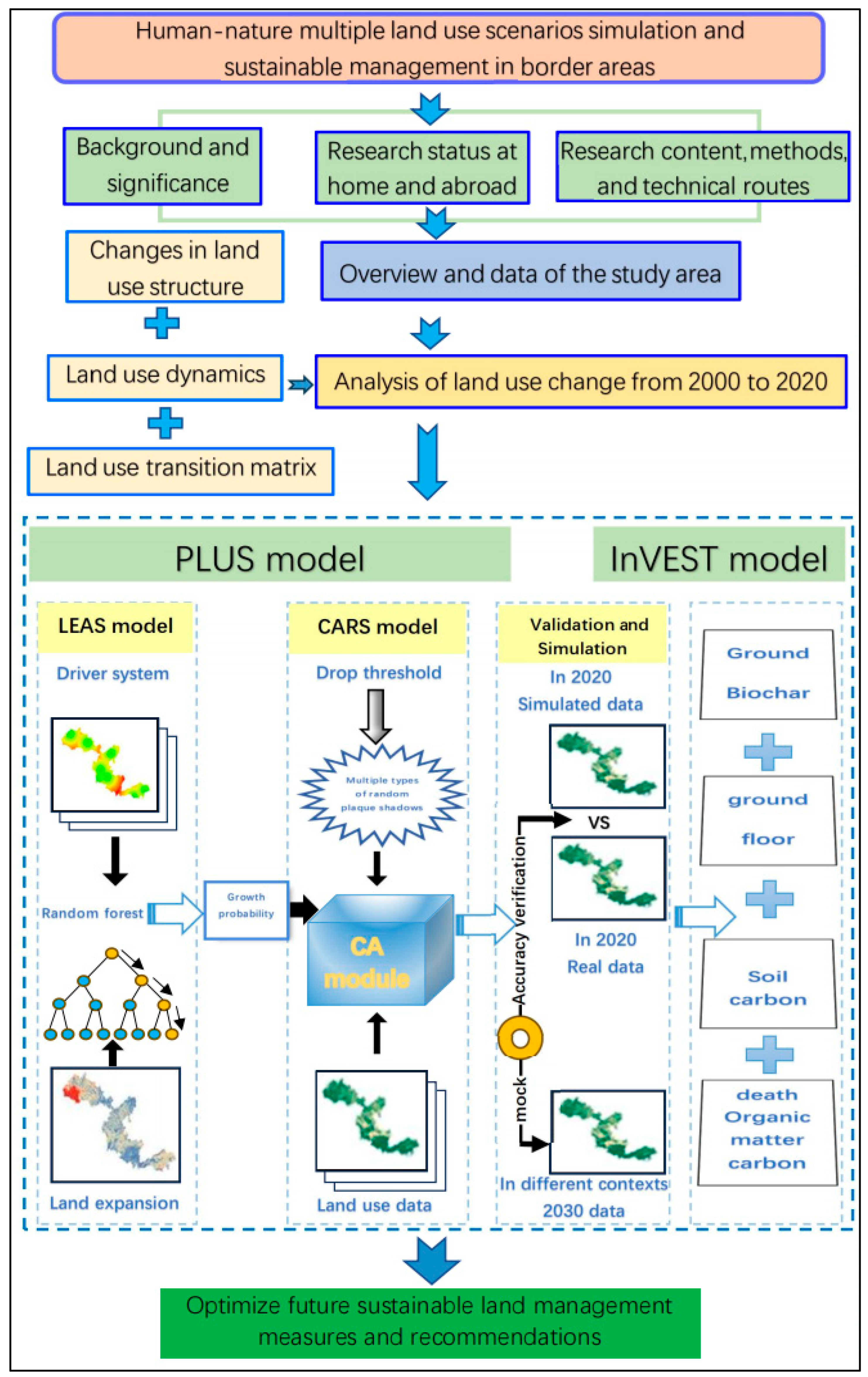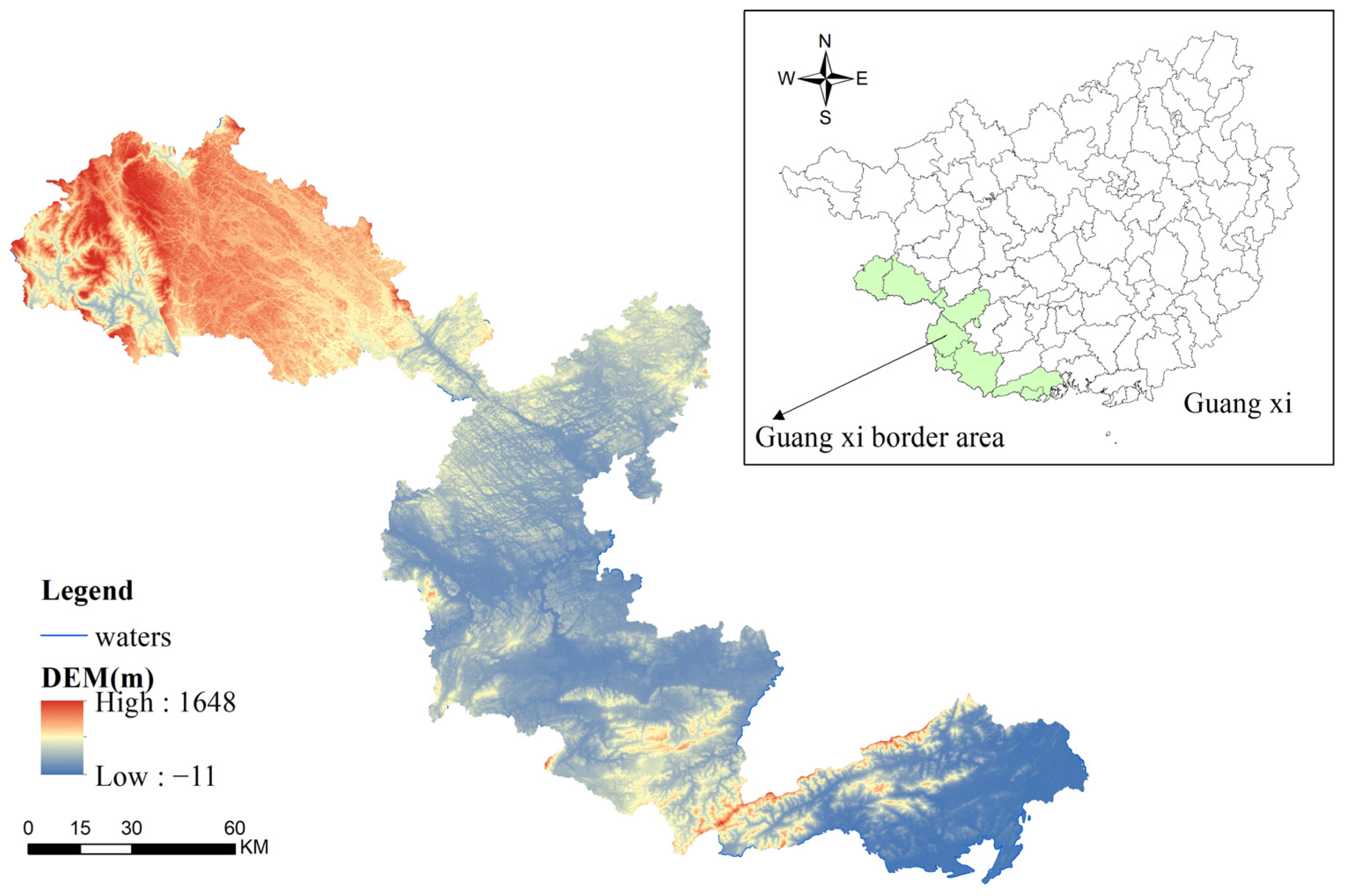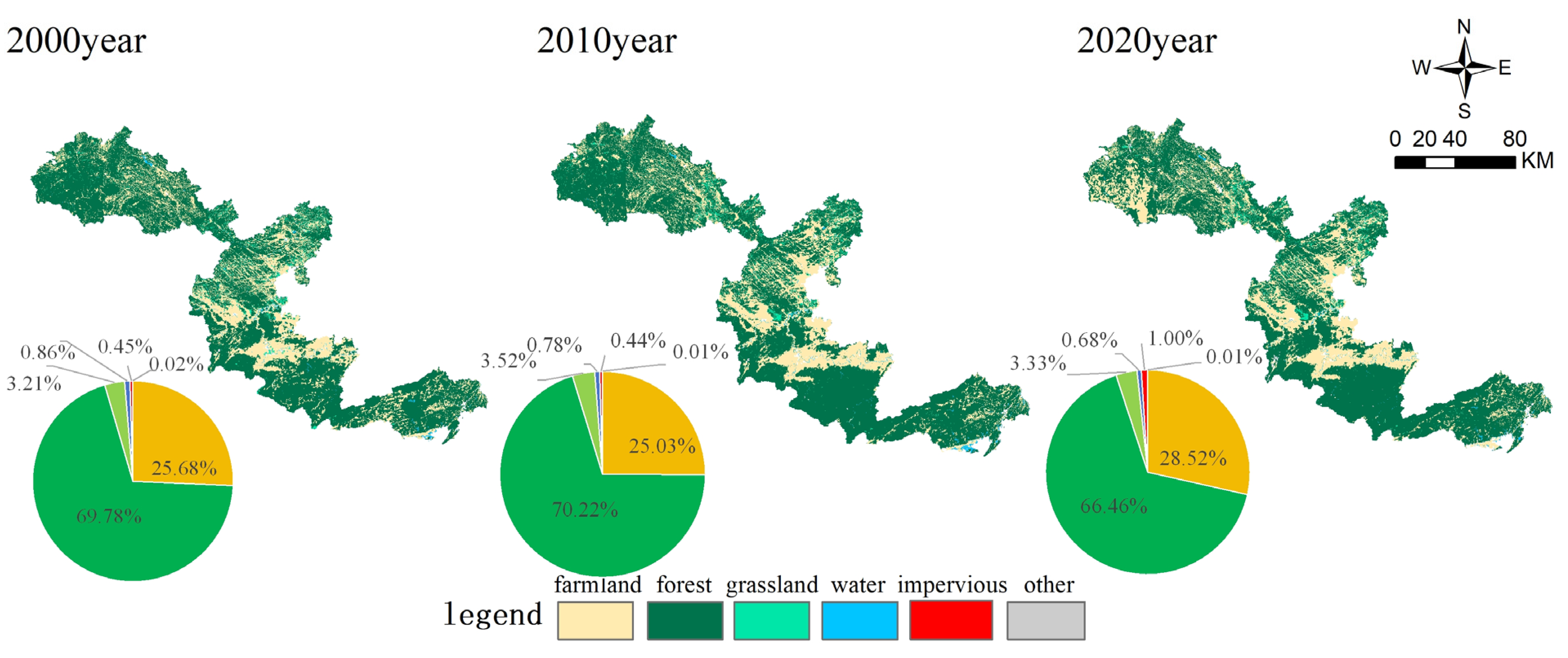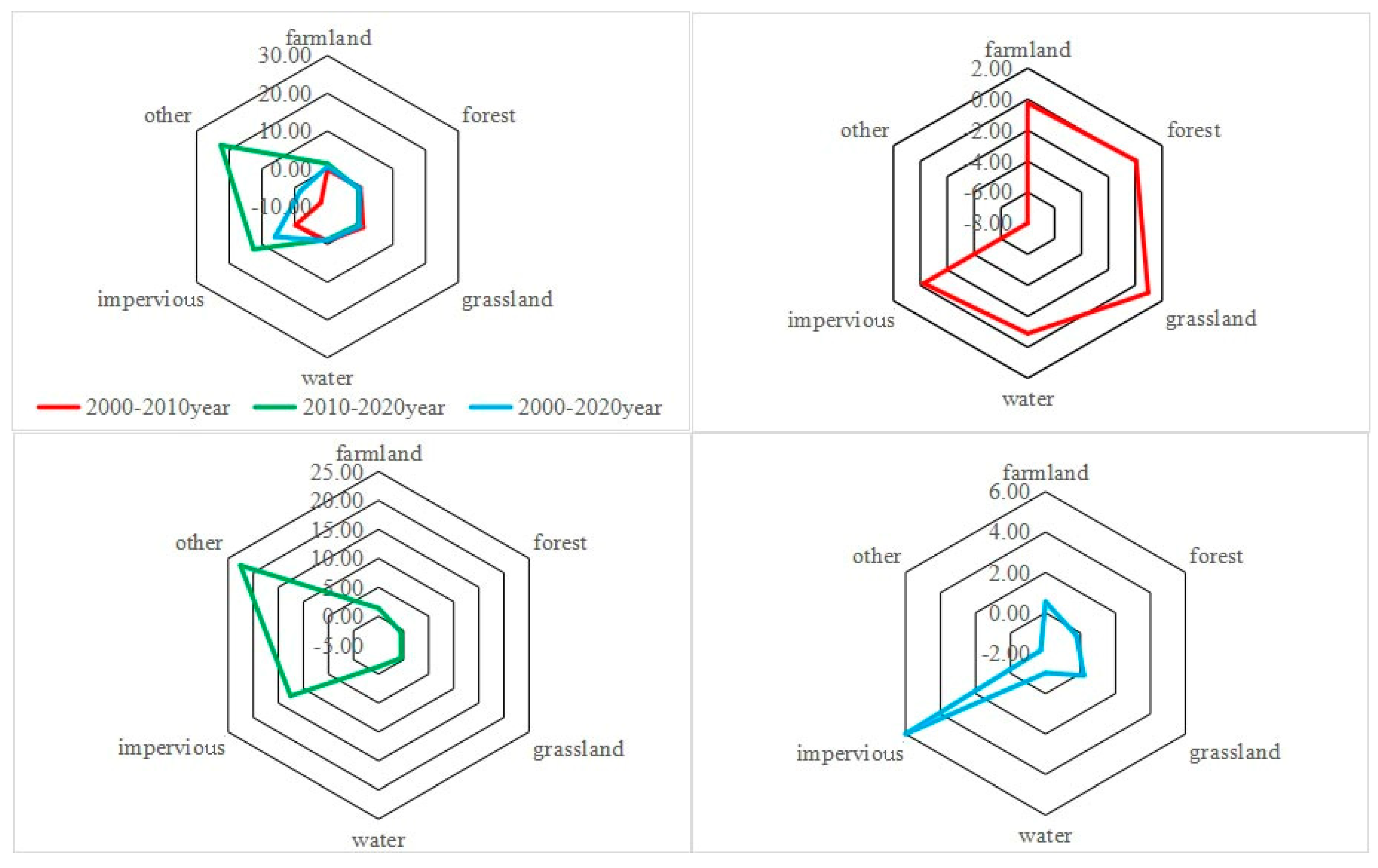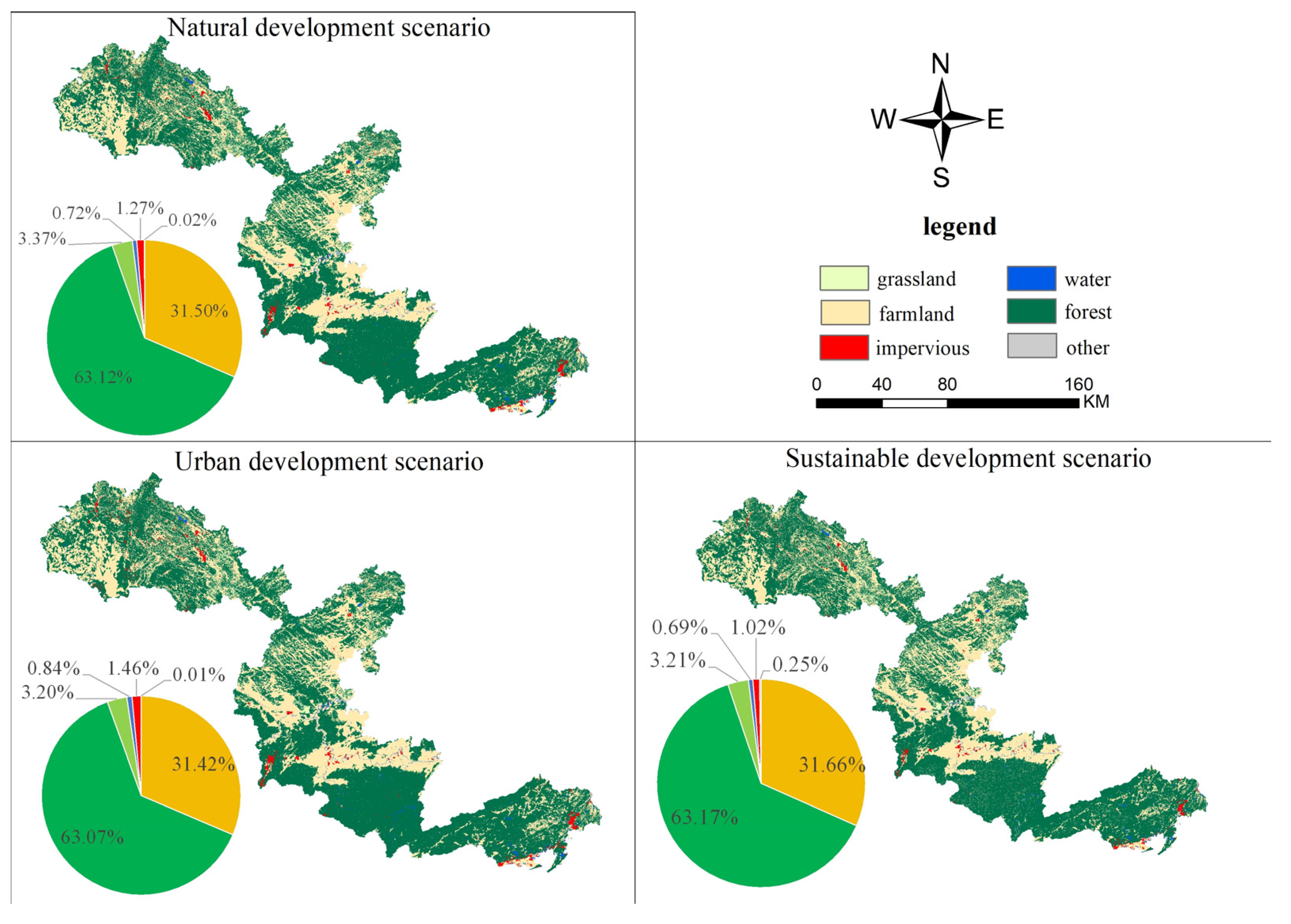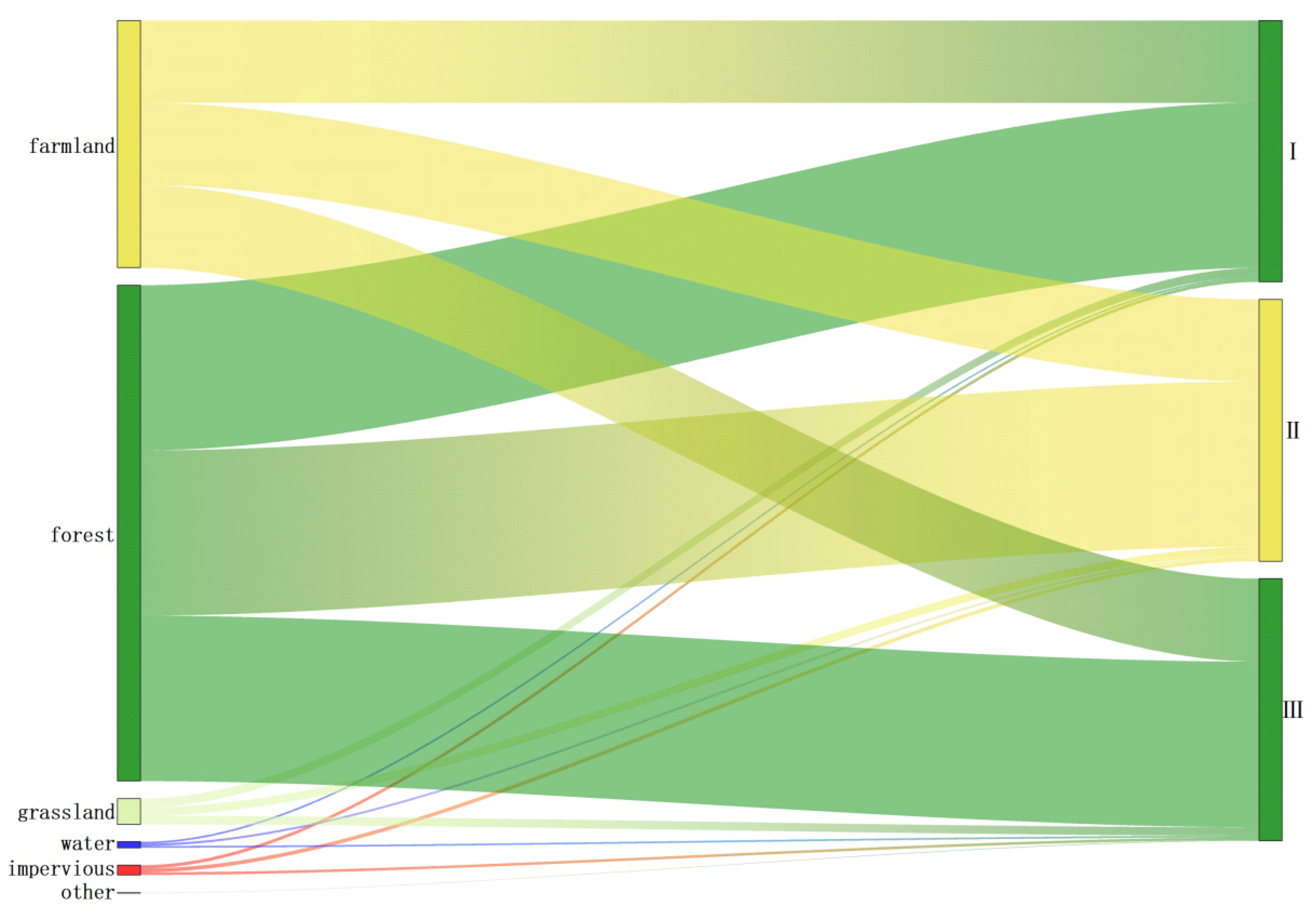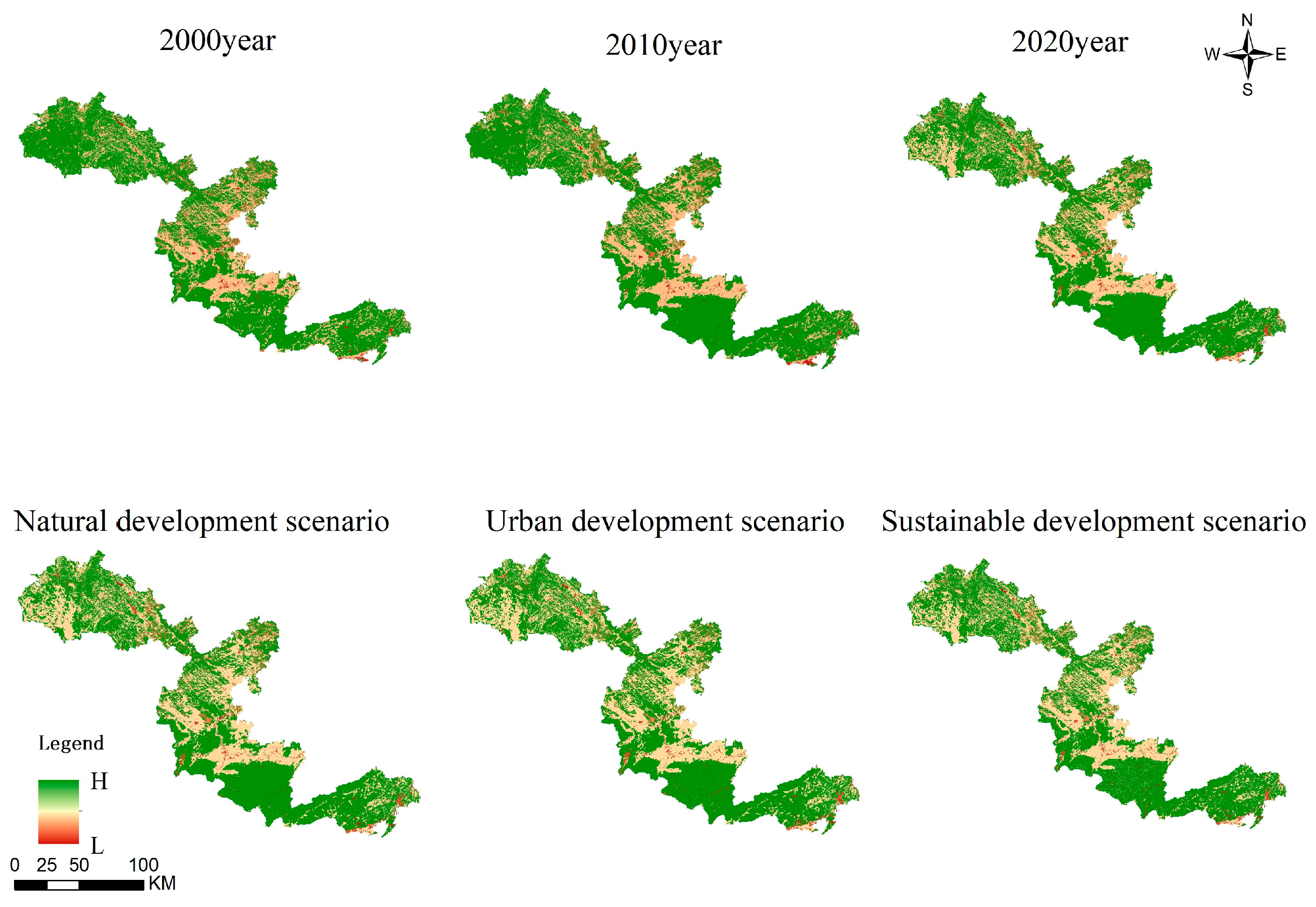5.1. Conclusions
(1) The overall structure of land use types in the Guangxi border area is dominated by forestland, cropland, and grassland, which account for 98% of the total. From 2000 to 2020, forestland, water areas, and other land types showed a decreasing trend, while construction land and cropland exhibited an increasing trend. This indicates that urban development has occupied forestland, water areas, and other land types, with the trend of urban expansion becoming increasingly evident.
From the perspective of comprehensive land use dynamics, changes were relatively stable from 2000 to 2010, while they accelerated significantly from 2010 to 2020. This reflects a shift in the socio-economic development of the border region from slow growth to rapid development, intensifying the trend of urban expansion and highlighting the growing impact of human activities in the area.
Based on the land use transition matrix, the changes in construction land and forestland are the most significant. The growth of construction land mainly comes from the conversion of forestland, cropland, and grassland, indicating that urban expansion has occupied large areas of surrounding cropland and forestland.
(2) Using 2020 land use data as a baseline, future land use in the Guangxi border region was simulated under three scenarios: natural development, urban development, and sustainable development [
22].
Under the natural development scenario, compared to 2020, the area of construction land showed the most significant increase, rising by 4825.62 hectares. Forestland experienced the largest decline, decreasing by 59,402.88 hectares. Grassland, water areas, and other land types increased by 742.86 hectares, 727.11 hectares, and 6.12 hectares, respectively. This suggests that under this scenario, construction land continues to expand outward, occupying cropland and forestland in urban surrounding areas.
Under the urban development scenario, construction land expanded at the fastest rate, increasing by 8252.19 hectares, primarily concentrated in Napo County, Jingxi City, and Pingxiang City. Other land types showed minimal increases, while forestland and grassland experienced the largest declines, mainly in Napo County and Jingxi City. This indicates that under the urban development scenario, construction land expansion is driven by infrastructure projects such as road and residential construction, further reducing the area of non-construction land types.
Under the sustainable development scenario, the decline in forestland and grassland was more moderate, with forestland decreasing by 58,571.1 hectares and grassland by 2124.82 hectares. Construction land also showed a much slower growth, increasing by only 440.1 hectares. This indicates the reduced occupation of surrounding land types by construction land. Water areas remained relatively stable, maintaining similar levels to historical data, which is conducive to harmonious development between humans and nature. Notably, cropland increased the most, by 56,010.55 hectares, primarily in Daxin County, ensuring food production and promoting sustainable development.
(3) Using the PLUS-InVEST model, carbon storage was predicted under the three scenarios: natural development, urban development, and sustainable development. From 2000 to 2020, ecosystem carbon storage in the border area declined annually, with an average annual reduction of 251,523.32 tons.
Under the natural development scenario, ecosystem carbon storage in the border area shows a gradual downward trend. According to InVEST model predictions, total carbon storage in 2030 is estimated at 252,477,986.16 tons, with an average annual decrease of 513,223.13 tons compared to 2020.
Under the urban development scenario, ecosystem carbon storage in 2030 is expected to decrease to 252,140,889.47 tons, with an average annual reduction of 5,469,327.95 tons. The continuous expansion of construction land in the border area leads to the significant occupation of cropland, forestland, and grassland, posing serious negative impacts on ecological balance, stability, and socio-economic development in the region.
Under the sustainable development scenario, ecosystem carbon storage in 2030 is projected to reach 252,608,075.03 tons, with an average annual decrease of 500,214.24 tons. The recovery of ecological carbon sinks shows a positive trend, albeit at a relatively slow rate, but the overall trend is improving. This plays a crucial role in achieving sustainable development and addressing climate change.
In future land resource planning, the border area should prioritize the sustainable development scenario, focusing on the protection and quality improvement of cropland resources while optimizing land use structures. This approach aims not only to ensure the sustainable utilization of cropland but also to enhance the carbon sink capacity of ecosystems. Such planning strategies will contribute to achieving the dual goals of sustainable land resource development and ecological environmental protection [
23].
5.2. Insufficient
(1) In the PLUS model, the parameter setting of transfer matrix and domain factor has a crucial impact on the simulation effect. The parameters set in this paper are mainly based on the land use change transfer status of Guangxi border area from 2010 to 2020, combined with the study of a large number of relevant literature, and through calculation and repeated debugging and verification, they are highly subjective. Therefore, future research should pay more attention to the optimization and improvement of the model, and realize the adaptive adjustment of parameters, so as to obtain a better simulation effect.
(2) Among the factors affecting land use change in a certain region, there are many complex and diversified driving factors. In order to have a more comprehensive and in-depth understanding of the role of driving factors, these factors should be selected and considered in a diversified way, which will not only help analyze and screen out the driving factors with significant influence, but also further improve the accuracy of the model and more accurately simulate the future land use pattern of the region. Although this paper has selected driving factors covering natural environmental factors, social and economic factors, and traffic network factors, due to the difficulty of obtaining some data, all relevant factors were not comprehensively considered. In future studies, it is necessary to further improve data collection and dig into other driving factors that may affect land use/cover change to achieve more comprehensive and accurate simulation and analysis.
(3) In the In VEST model, the carbon density data used in the present paper mainly rely on the reference of the past literature, and the data lack field sampling and measurement data as support. In addition, the carbon density of different land types will change dynamically with time, which is not fully considered in the model calculation. In the calculation process, the model often ignores the influence of vegetation growth and the internal structure of land use on carbon storage value, which will lead to errors in the spatio-temporal variation rule of carbon storage to a certain extent. Future studies should strengthen the exploration and application of new learning methods and combine field sampling and investigation to determine carbon density more accurately, along with Improving the accuracy and reliability of model prediction [
24].
